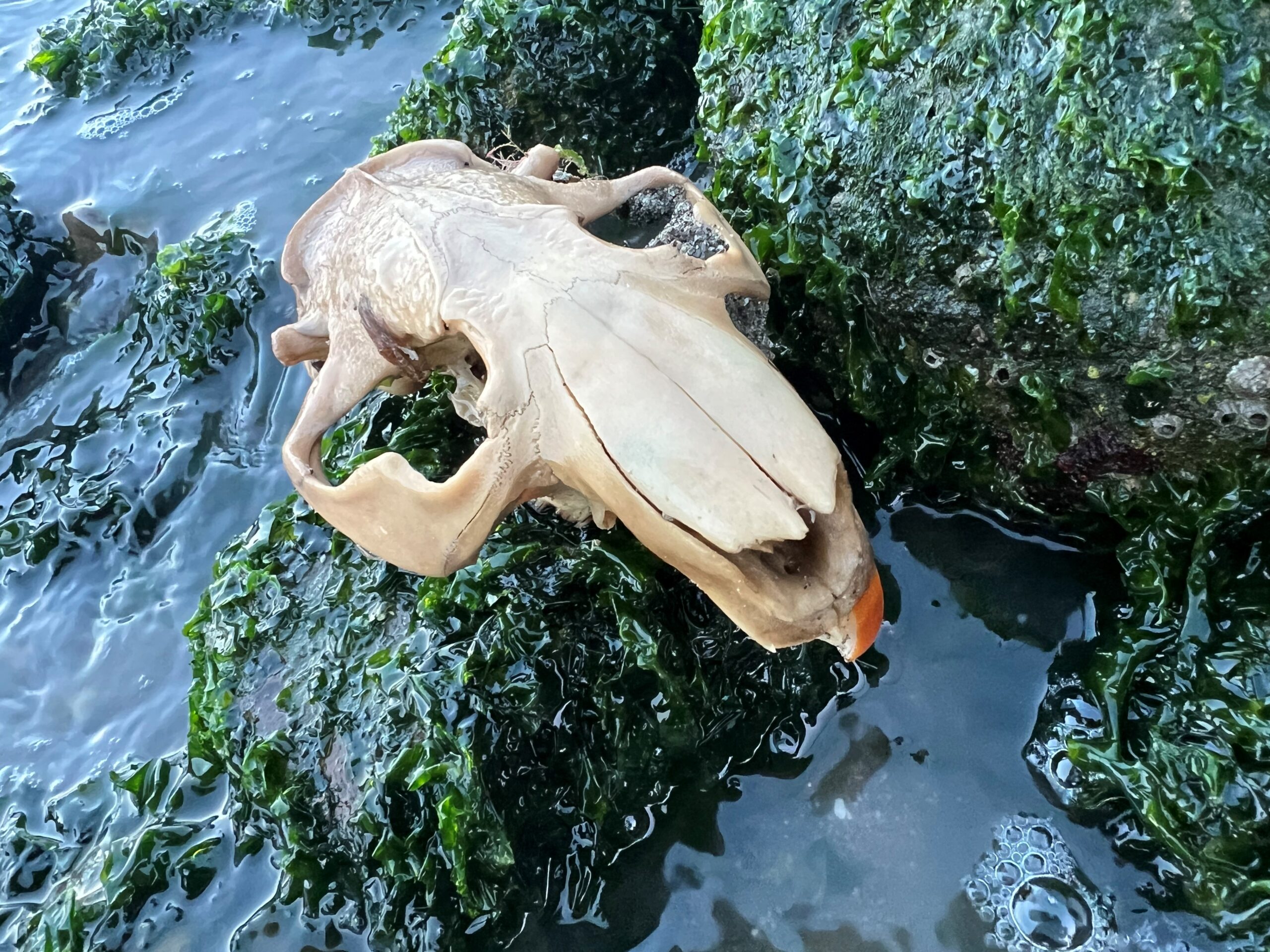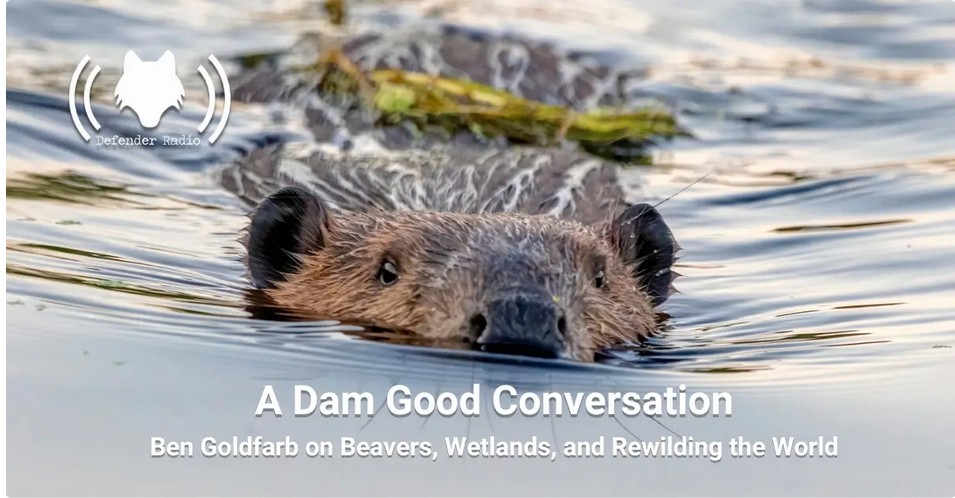Author: heidi08
Ahhh the dangerous switchblade of having a “little bit of knowledge about something“. It can lead to such spectacular errors. In this big of speculative science, the author seems to have recently learned that our current beavers are good for wetlands so she therefore infers that Castorides, which was bigger, was even BETTER for wetlands!
Did Giant Beavers Shape North American Wetlands? How Lost Megafauna May Have Influenced Ecosystems
 Giant beavers, scientifically known as Castoroides, were truly remarkable creatures. These beavers were not your average backyard dam builders; they were giants, reaching lengths of up to 8 feet and weighing over 200 pounds. Imagine encountering an oversized beaver, as large as a modern-day black bear, leisurely waddling through ancient forests. Their large, flat tails and webbed feet made them exceptional swimmers, perfectly adapted to a life spent navigating the waterways. The giant beaver’s size alone suggests that it may have had a significant impact on its environment, much like the beavers we know today.
Giant beavers, scientifically known as Castoroides, were truly remarkable creatures. These beavers were not your average backyard dam builders; they were giants, reaching lengths of up to 8 feet and weighing over 200 pounds. Imagine encountering an oversized beaver, as large as a modern-day black bear, leisurely waddling through ancient forests. Their large, flat tails and webbed feet made them exceptional swimmers, perfectly adapted to a life spent navigating the waterways. The giant beaver’s size alone suggests that it may have had a significant impact on its environment, much like the beavers we know today.
Just to be clear, it is generally believed that the giant beavers INABILITY to build dams was what lead to its extinction and replacement by our beaver today. Because Castor could adapt and Castoroides could not.
To understand the potential impact of giant beavers, we must first recognize the role their modern descendants play in ecosystems. Beavers are often referred to as “nature’s engineers” due to their remarkable ability to shape landscapes. By building dams, beavers create ponds and wetlands that serve as vital habitats for countless species. These wetlands help to filter water, reduce erosion, and provide breeding grounds for fish and amphibians. The presence of beavers can transform entire ecosystems, promoting biodiversity and enhancing the health of the environment.
One of the most intriguing questions about giant beavers is whether they built dams like their modern relatives. While there is no direct evidence of dam-building behavior in giant beavers, their anatomical features suggest they could have manipulated their environment. Their large incisors and powerful jaws would have allowed them to fell trees and manipulate vegetation. Even if they didn’t build dams, their sheer size and feeding habits could have still altered water flow and vegetation patterns, indirectly shaping the wetlands.
You know the way big things always impact wetlands. Like elephants, Or bears.
Just so you know the research says that these beavers did not chew trees with those big curved incisors. Isotope analysis says they ate tiny pond weed to survive. Go figure.
But still. never let peer reviewed research get in the way of a good bit of speculative science. That’s what I always say.
The extinction of giant beavers, along with other megafauna, marked a significant change in North American ecosystems. These creatures vanished around 10,000 years ago, likely due to a combination of climate change and human hunting. The disappearance of such large herbivores would have had a profound impact on the landscapes they once inhabited. Without these giant ecosystem engineers, the dynamics of wetlands would have shifted, potentially altering the distribution and abundance of other species.
Call me crazy but I’m pretty sure that the biggest impact on any wetlands at that time was the ICE AGE. You know the one that killed off the mastadons and the woolly mammoths.
At this point in the article the author includes for no apparent reason (and without credit) Joe Wheaton’s famous aerial photo of the aftermath of the Sharps fire.
I guess because magafires are kind of like megabeavers?
The story of giant beavers offers valuable lessons about the interconnectedness of species and ecosystems. It reminds us of the importance of preserving biodiversity and the roles that different species play in maintaining ecological balance. By studying ancient megafauna, we gain a deeper appreciation for the complexities of nature and the delicate interplay between species and their environments. These insights can inform modern conservation strategies, encouraging us to protect the creatures and habitats that remain.
Mm okay, but what you’re doing with this article doesn’t constitute an INSIGHT. Just so you know.
Imagining the landscapes of North America with giant beavers roaming freely invites us to explore the potential for ecological restoration. Concepts like rewilding, which involve reintroducing species to restore natural processes, draw inspiration from the past. While we cannot bring back extinct species, understanding their roles in ecosystems can guide efforts to recreate similar functions with existing wildlife. This approach fosters a more resilient and balanced environment, ultimately benefiting both nature and humanity.
Yes it would be great if we could UNDERSTAND THEIR ROLE in the ecosystem. Or if you could understand anything about them and maybe do a little reading or even just visit wikipedia before you leap into maga-fauna speculation.
You are right that castor is important. But whether Castorides was MORE important because he was even BIGGER is simply not consistent with any science I’ve read.
Bigger doesn’t always mean better.
 Enjoy your Sunday morning coffee with this nice interview with Ben Goldfarb. I especially liked hearing about his thoughts how California used to be the state that needed beavers most and understood them least to where we are now hand over fist piling on beaver supporters now.
Enjoy your Sunday morning coffee with this nice interview with Ben Goldfarb. I especially liked hearing about his thoughts how California used to be the state that needed beavers most and understood them least to where we are now hand over fist piling on beaver supporters now.
Oh and that Heidi Perryman woman gets a mention.

Guess what’s happening in Durango, Co?

I feel so naive. I had been seeing this headline for the last couple of days but it was protected by a firewall or i was busy so I couldn’t read the whole story but I though “Oh that’s cute, a grad student made a map of where beaver populations are in Connecticut because of all the good things beavers do.”.
 But poor poor Heidi with her silly little ideas. it turns out the grad student was working under a real estate grant and was doing it to consider whether BEAVER DAMS SHOULD BE ADDED TO REALESTATE DISCLOSURES Because of all the FLOODING.
But poor poor Heidi with her silly little ideas. it turns out the grad student was working under a real estate grant and was doing it to consider whether BEAVER DAMS SHOULD BE ADDED TO REALESTATE DISCLOSURES Because of all the FLOODING.
No word on whether they should also be added to reduce fire insurance zones. I guess we aren’t worried about that.
UConn graduate student creates Connecticut’s first beaver map
The first map tracking Connecticut’s increasing beaver population was part of a research project in the University of Connecticut’s Department of Natural Resources and the Environment. Evan Zocco, the research assistant who conducted the project, says the map can help solve both property management and climate mitigation issues.
One reason the map has such wide applicability is because beavers are categorized as a “keystone species” with profound influence on the ecosystem, according to the project’s website.
“Beavers are considered keystone species because of their unique ability to create more diverse habitats than those that previously existed,” the website stated. The creation of this diversity was analyzed in the research project by distinguishing the “stages of sites” in beaver habitats.
You can see why I might of thought this would be good news. Ohh you silly silly girl.
The first stage in the website’s breakdown was the construction of a dam to block flowing water. Beavers stop streams because they need to redistribute that water to create their habitat. Dams create ponds where beavers build lodges in the middle to protect against predators, according to the project’s introduction.
Connecticut’s landscape is abundant with optimal areas for beavers looking to build dams, but that becomes a problem in close proximity to human structures, according to the study. The security that dams grant beavers is not extended to humans because dams flood the surrounding area. This increases the likelihood of water damage in residential areas close to active beaver sites, according to Zocco’s research.
Zocco gave some examples behind the map’s practicality by highlighting at-risk residential areas that he found using the resource he created. The website highlights 15 houses that are particularly close to beaver structures in the towns of New Milford, Sherman, Ashford, Colchester and Killingworth.
Websites citing towns close to BEAVER STUCTURES.
Because they’re so dangerous and ICKY. Okay you do know that nothing a beaver makes is permanent right? Addresses change with the calendars. OMG what if you make this whole useful map and the beavers move? Or are eaten?
Connecticut home flood repair costs are some of the highest in the country, according to a report published earlier this year by the National Resources Defense Council (NRDC). A contributing factor to these costs is the lack of required disclosure about flooding in the real estate industry. In Connecticut, sellers are only required to warn buyers when a home is in a flood hazard area, not if there was any previous flood damage, according to NRDC lawyer Joel Scata.
“This difference in flood costs highlights the importance of flood disclosure laws so that home buyers have a clear picture of the potential burden from flooding,” the NRDC report stated. While mapping beaver activity won’t tell buyers whether there were any previous floods, the information in the map can help homeowners avoid some financial burden, according to Zocco.
You know how you have to report if someone died in a house in some states or if its haunted in NY state or in Martinez when we bought our house that it was subject to the noise of CHURCH BELLS.
Well this study thinks you should have to report being near BEAVERS too.
“While having a stream on a property can enhance its aesthetic appeal, it also brings the potential for unintended destruction if beavers choose to build there,” according to Zucco’s website. “Awareness of these risks is crucial for property owners to implement preventative or mitigative measures effectively.” The beaver site map used Zocco’s research to ensure the public has accessible resources informing about the risks.
Or you know if the stream CHOOSES TO FLOOD EVEN WITHOUT BEAVERS. That could be a problem for homeowners too.
But don’t worry. It’s not all bad news.
Not all beaver activity was found to be financially destructive, according to Zocco’s study. While the first stage of a beaver site raises concern in human-beaver relationships with flooding, later stages of beaver activity compel our co-existence through carbon dioxide mitigation, according to the project’s website.
Well that sounds better. How long does that take?
“Beavers naturally generate these ecosystems as a byproduct of their activities,” the website stated. “In contrast, man-made wetlands often fail to replicate the effectiveness of their naturally occurring counterparts.” Research by the State of Washington’s Department of Ecology reassures Zocco’s claim.
“Younger freshwater wetlands and disturbed wetlands can emit carbon until they develop sufficiently to sequester carbon,” Washington’s Department of Ecology reported. “The turnover time from a wetland being a carbon emitter to a carbon sink can take 61 to 14,000 year.”

Okay so the bad things beavers do are going to happen RIGHT NOW so you better watch out. But the good things they do take a millenium or so,
So homeowners should plan accordingly.
It took Evan Zocco and advisor Dr. Chandi Withrana months to compare different images and monitor changes instigated by beaver colonies. The long period of research reflects the number of images the pair analyzed, with the dates going back as far as 1930, according to The Hartford Courant.
You mean to tell me you looked at images from that long ago and the subject of your research ISN’T “Home owners in CT are soo stupid that they’ve been building on the flood plains for nearly a century?”
Any mention of fire risk near beaver ponds? No I didn’t think so.






































